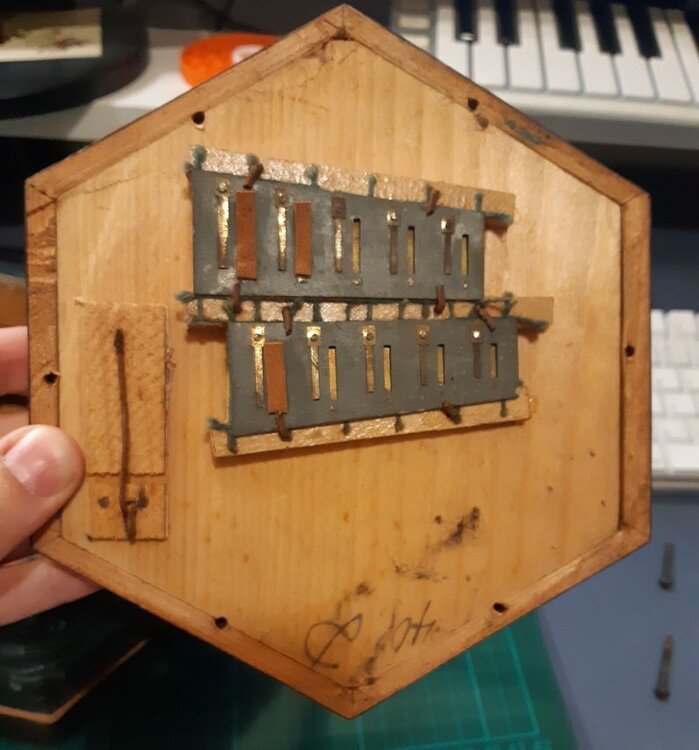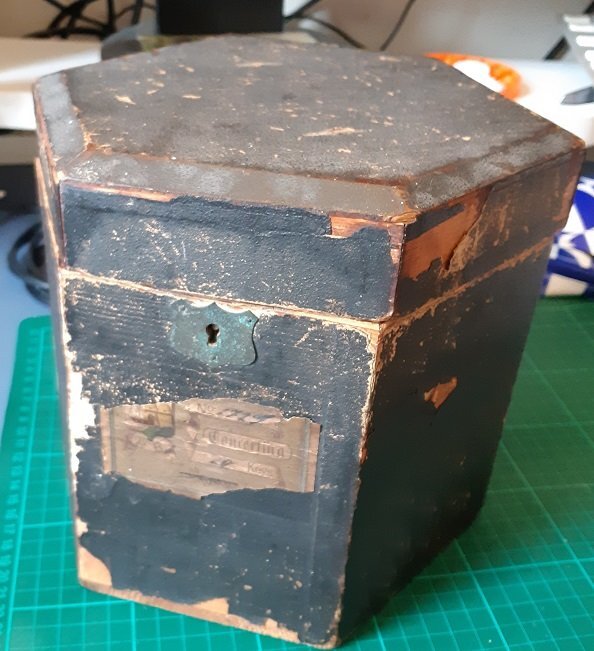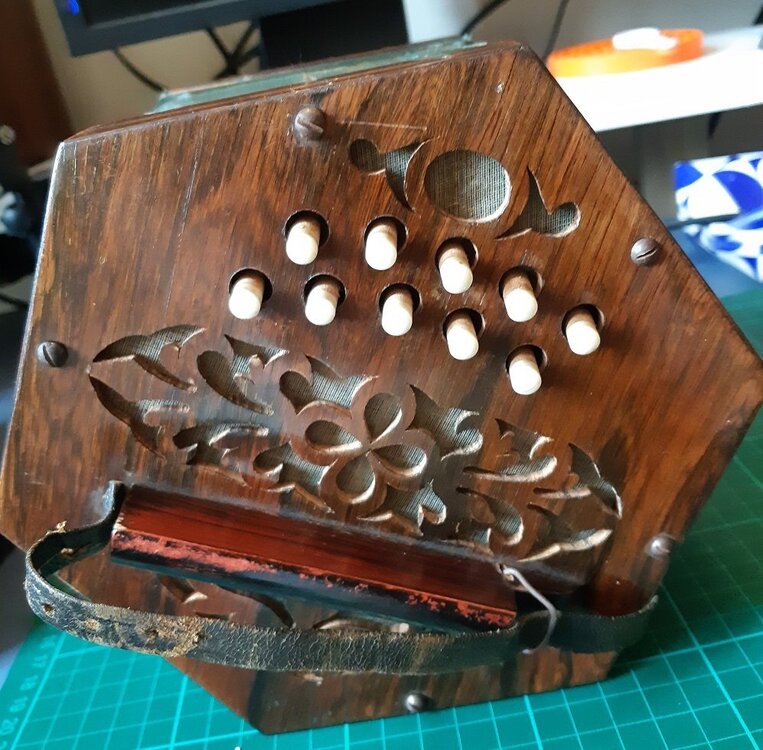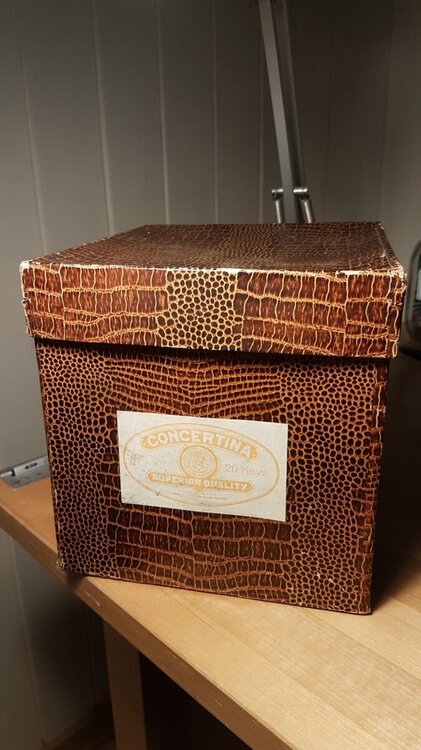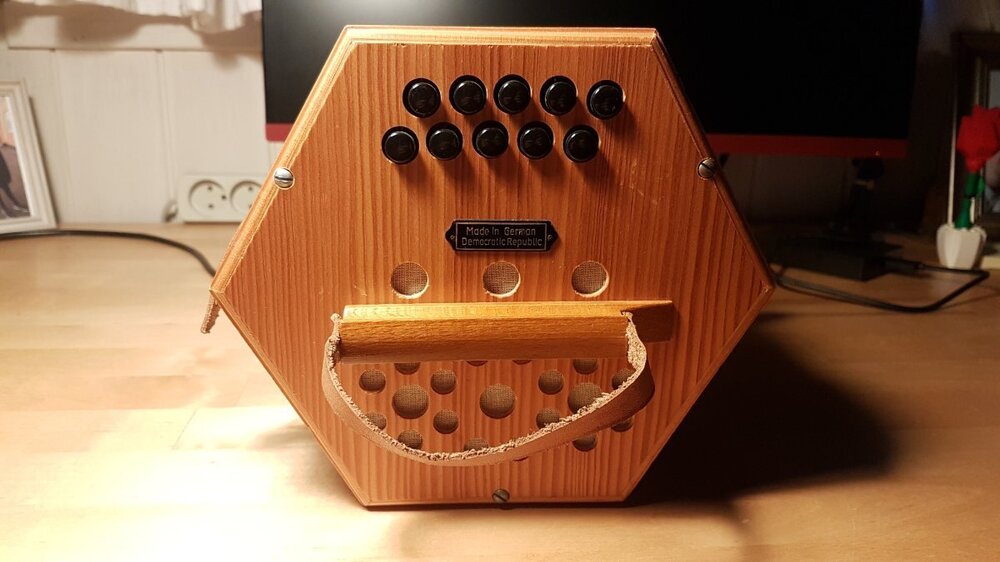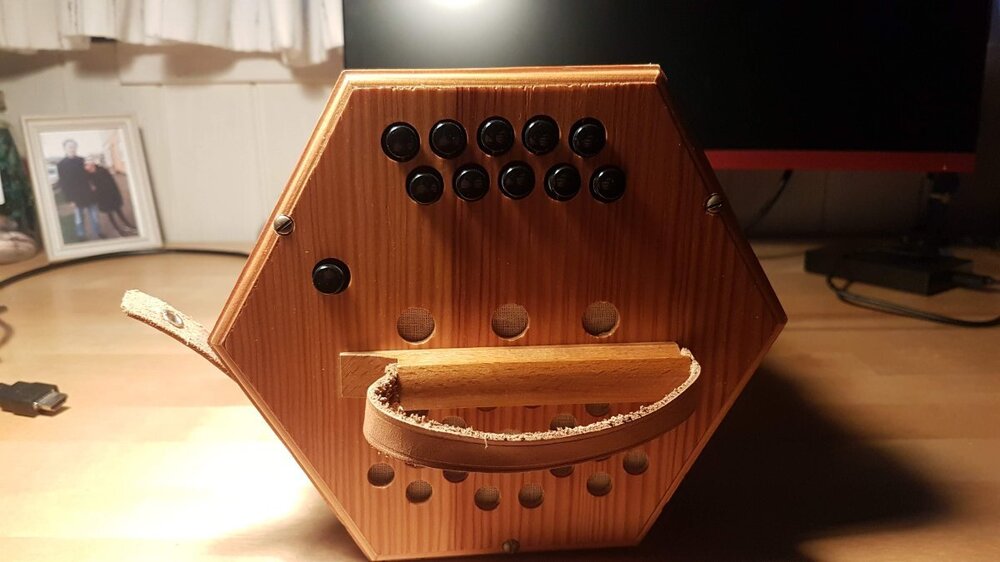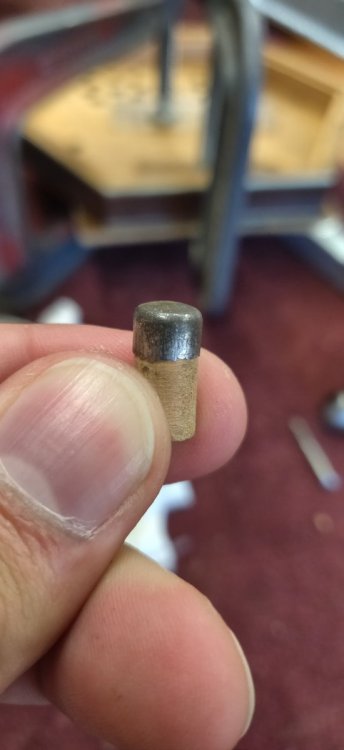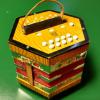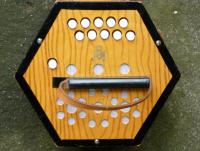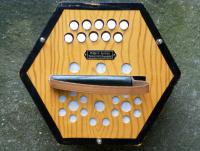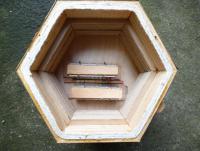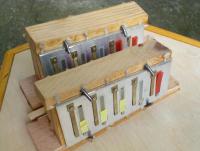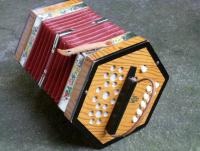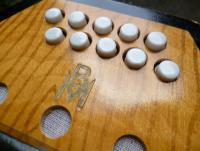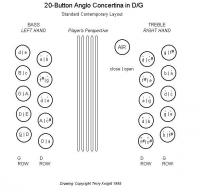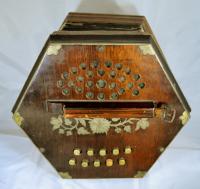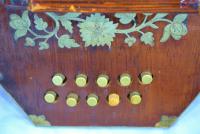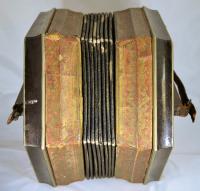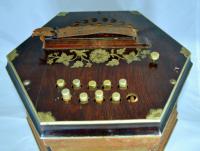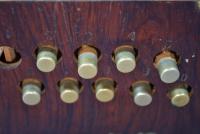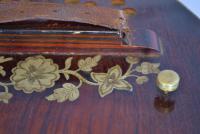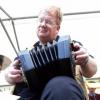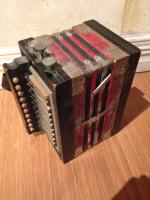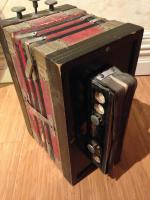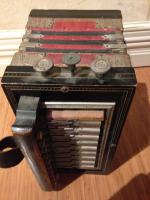Search the Community
Showing results for tags 'German'.
-
I got this old German-made 5 fold impulsively and cheaply as my entry into concertinas. I want to have a go getting this more playable, changing as little as possible and preserving what I can. I have time, skills and tools but seem to be low on money as always. So far I gather it was made sometime between 1850 and 1940 which isn't greatly precise but enough for me to consider this as something from "the olden days". I don't want to unwittingly ruin anything historical and I plan to keep anything I remove or change because at the very least its interesting. And also write a note about what I do to leave in the case. It is what I would consider playable. Notes seem to be relatively in tune and most all working. Some notes don't sound as easily as others unless the air is pushed harder, I could describe as maybe a bit wheezy and breathy? I've been able to play some basic little tunes (and had a lot of fun so far ) and I'm planning to carefully clean the reeds with something akin to a Q-tip and isopropyl. The bellows seem okay but if you hold one end up and let the other drop without holding any buttons, It will slowly expand over about 16s. I plan to shine a bright light through from the inside of the bellows and patch any holes with a suitable glue and paper or very thin leather. Any recommended glues and kind of paper? (Is PVA wood glue okay?) - Some notes buzz in an old-timey alarm fashion, I figure the pin holding the reed to the plate is loose, do you think this is a nail/ screw/ rivet? - Does each reed need a leather flap? (brown reed flaps as pictured below) Is this potentially the cause of the harder to sound notes that are wheezy? I want to fix the box with new hinges and latches. I don't think I can get the lock working despite having an old key that I ground the tooth on so it fits well and turns but hits a dead end both ways at about 140 degrees. I think I'm best to add some new low profile latches on the outside. I will try make any new brass look old, I love the old look of the case. As I've been told in my previous post, I will store this on its side. I'm thinking some kind of matt Mod Podge or varnish to seal the outside of the case and protect the cool old label. Also may add some old wood splines to some of the loose corner joins. I think it would be cool to keep the splines visible, is this a crime? For the handles, will find some old aged leather that looks the part. I think the thumb button may need fixing too under the bone cap. I can figure these things out! Overall, I don't mind if its a little out of tune and scratchy, as long as its just playable enough. I think the roughness and patchy repairs is charming and suitable for this instrument. Maybe one day I can get (or make...) a better one Any advice is greatly appreciated, and thanks for taking the time to check out this post Even just pointing out any red flag in my approach would help! Happy to take more pics and do progress updates if people are interested. ❤️
-
- repair
- restoration
- (and 4 more)
-
Hello everyone I was browsing my local second hand shop today came across this odd little box, in which was an equally odd concertina. It was really cheap already and on sale on top of that (I ended up paying about 12 euro for it), so I thought "why not?" The production year can be narrowed down somewhat, given that it is produced in the "German Democratic Republic" (East Germany) so somewhere between 1949 and 1990. A quick google makes me believe that it is a Scholer, but perhaps someone can verify this? Also it seems to be a G/D instead of a C/G. It feels really cheap and is leaky, but sounds ok for what it is. The buttons are decently responsive and overall it feels much better than the 200 euro Chinese eBay crap I started with a year ago. Yes, I am one of those people I probably won't be choosing this over my Phoenix anytime soon, but I might give it to my niece so she has one of her own to get started with. She's tried playing my Phoenix and is annoyingly quick to learn
-
Hey all, I've been working on restoring an old Concertina I picked up at an antique shop, and one of the (many) problems I'm running into is what the button caps are made of, and how they were put together. I attached an image below, does anybody have any knowledge on this, or spares available I could pick up?
-
Hello. I've just purchased a East German Anglo concertina here in Brazil (concertinas are not usual in this country) and was lucky since It was inexpensive - less than US$100 - and in great condition. I research for it's brand "BM" and couldn't find anything, but in my search I've found similar ones made in Klingenthal as Scholer, Galotta and Rosetti Rambler. Does anybody know anything about BM and why there is no mention to that brand in internet? My instrument is a 20 button D/G and has two reeds per note, but the second button on G row at bass side which should be D/E (according to the standard 20 button D/G layout), in mine sounds D/F#. Other 19 notes sound as expected, althought a little out of tune. Is this right? Are the D/G Scholers, Galottas and RRs tuned like that? Thanks.
-
Hey guys, Many thanks in advance for the help as I am a complete layman when it comes to concertinas. I was just wondering whether anyone could tell me anything about this concertina I have attached pictures of. Helpfully it isn't marked anywhere with a maker but to my eye it is nice quality. The only thing I think I know about it is that its an Anglo-German set up and made from rosewood veneer. If anyone knows anything about this instrument then I'd love to hear it, Google has failed me! Anthony
-
The tune for this week is the "Sett Quadrille". It#s a very energetic dance with three steps in a bar. Two things show how powerful this dance is: The tempo is difficult to find out in the living room. The joke says play it so fast that the dancer's face turns red. Then slow down a bit. The other thing is a picture in my head when our female dance leader stands beside the group and is clapping so that they get more motivated. They need every help.. It is hard work for the musician, too, but I have a drink beside me. Seth Quadrille.mp3 Shared with Dropbox DROPBOX.COM
-
In the last year I explored a lot of Danish and North German tunes. Wonderful music that is working in the same style as English ceilidh music. So my project is: Learning every week a new of these English, Danish or North German tunes by heart. Here is the link for the first week played on my Chemnitzer: https://www.dropbox.com/s/zyuohlagww0h3ik/Trekant%20No15-%20Den%20gamle%20Mand.m4a?dl=0
- 8 replies
-
- Chemnitzer
- Duet
-
(and 3 more)
Tagged with:
-
I'm sorry, I know that I shouldn't be posting an accordion here and I hope that I'm not breaking any rules but, I have been given this small diatonic, button accordion today by a friend and I just wanted to ask what actually makes this an accordion? It does have 3 stops and 2 bass buttons, as well as the other 10 buttons, but, basically there's not a lot of difference, apart from the stops and the shape, from an anglo concertina… is it the stops that classes it as an accordion? It's not much bigger than my anglo. I've tried searching on line for this 'Melba' accordion, it's made in Germany, but I can't find any information about it… for example its age, or a fingering chart. Does anyone have any ideas or info about it? It has an amazingly deep and rich tone for such a small instrument...
- 10 replies
-
- Button accordion
- squeeze box
-
(and 2 more)
Tagged with:

